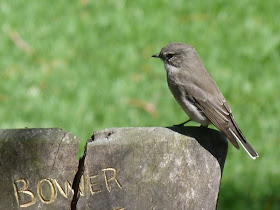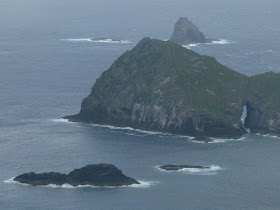In my last posting I featured a few greenhood orchids, but I realised later that they probably won't be familiar to readers outside of Australia, and even to many people living here. I thought I might rectify that today. As a group they are almost restricted to Australia, and they are fairly modest and inconspicuous. They are over 200 strong however, and I find them fascinating. As I mentioned in the last posting, there is some turmoil here over the taxonomy; they have always been lumped into just one genus, Pterostylis, but recently, and controversially, the genus has been divided into 16 genera by Jones and Clements. I shall use their genus names here, because that's how they appear in Jones' mighty Complete Guide to Native Orchids of Australia, the only comprehensive work.
They seem to be an old group with no close relations; indeed they are so specialised that they are not always immediately recognised as orchids. To explain just how they're composed, allow me to give you a brief revision of the basics of an orchid flower, using a more 'standard' flower type.
In greenhoods, the two dorsal petals and the dorsal sepal strongly overlap to form the hood, or galea.
+TNR+0310.jpg) |
| Summer Greenhood, Diplodium decurvum, Tidbinbilla Nature Reserve near Canberra. The hood, or galea, covers the top of the flower; it is hard to make out the three different parts of it. |
This picture also shows two other features of greenhoods. One is that the lateral sepals are fused, unlike those of other orchids like the Diuris above. The other is the essential labellum, which is tucked away inside the flower, sometimes protruding but in some cases always hidden. No greenhood provides a nectar reward to hard-working pollinating insects; all of them attract small male flies, either fungus gnats or mosquitoes, with a pseudo-pheromone, a chemical that mimics the 'come hither' scent of an interested female gnat or mosquito. When the amorously hopeful insect contacts the hinged labellum it snaps back, pinning the insect against the column, which contains both pollen and style. In its struggle the unfortunate gnat collects the sticky pollen, or delivers a bundle it's already carrying.
Two basic groups of greenhoods are recognised. The larger group is characterised by having upswept lateral sepals like the summer greenhood above, and the species featured in my last posting. Here are some more of this grouping.
 |
| Large Mountain Greenhood Pterostylis monticola, Namadgi National Park near Canberra. Some 25 Australian species remain in Pterostylis under Jones' taxonomy. Here the labellum protrudes. |
 |
| Nodding Greenhood Pterostylis nutans, Micalong Falls, New South Wales. Not dozing, they always look like this! |
In the other sub-group, the lateral sepals point downwards - ie they are deflexed. The leafy greenhoods are good examples of this group.
 |
| Sikh's Whiskers (!) Oligochaetochilus boormanii Weddin Mtns NP, south-western slopes New South Wales. Not all greenhoods are just green! |
To end, a couple of more spectacular ones, albeit still in an understated way.
 |
| Jug Orchid Stamnorchis recurva, Twin Creek NR, Western Australia. The only one of its genus, restricted to the west, and quite unmistakeable. |
So, the greenhoods, subtle beauties. I have you've enjoyed them as much as I do.
BACK ON TUESDAY

+sp+Alligator+Gorge+0807.jpg)



+plumosum+Alligator+Gorge+0807.jpg)
+TNR+0310.jpg)









+exiguum+closeup+Bom+Ck+Nowra+0309.jpg)































